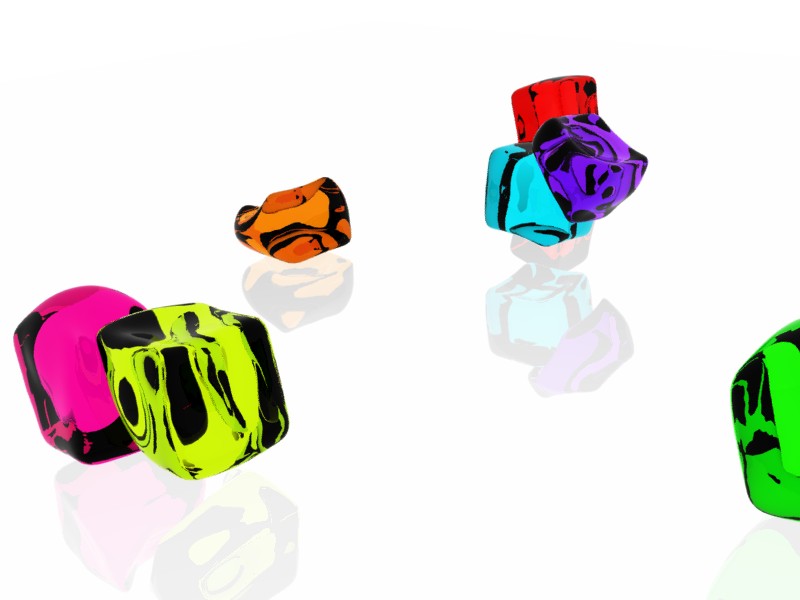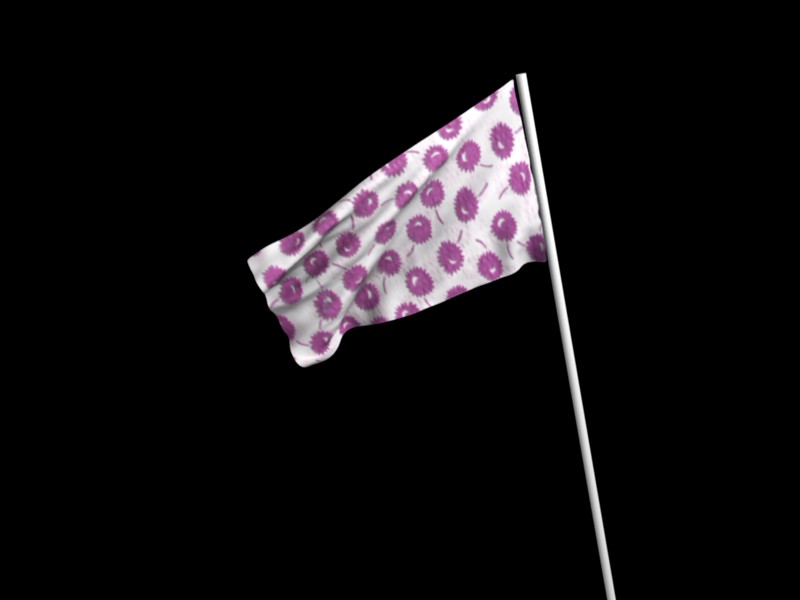Examples¶
To start with cloth, the first thing you need, of course, is some fabric. So,
let us delete the default cube and add a plane. In order to get some good floppy and flexible fabric,
you will need to subdivide it several times, about eight is a good number.
So Tab into Edit Mode, and press W ,
and set it to 8.
Now, we will make this cloth by going to the Physics tab. Scroll down until you see the Cloth panel, and press the Cloth button. Now, a lot of settings will appear, most of which we will ignore for now.
That is all you need to do to set your cloth up for animating,
but if you press Alt-A, your lovely fabric will just drop very un-spectacularly.
That is what we will cover in the next two sections about pinning and colliding.
Using Simulation to Shape/Sculpt a Mesh¶
You can Apply the Cloth Modifier at any point to freeze the mesh in position at that frame. You can then re-enable the cloth, setting the start and end frames from which to run the simulation forward.
Another example of aging is a flag. Define the flag as a simple grid shape and pin the edge against the flagpole. Simulate for 50 frames or so, and the flag will drop to its “rest” position. Apply the Cloth Modifier. If you want the flag to flap or otherwise move in the scene, re-enable it for the frame range when it is in camera view.
Smoothing of Cloth¶
Now, if you followed this from the previous section, your cloth is probably looking a little blocky. In order to make it look nice and smooth like the picture you need to apply a Smooth and/or Subdivision Surface Modifier in the Modifiers tab. Then, in the same editor, find the Links and Materials panel (the same one you used for vertex groups) and press Set Smooth.
Now, if you press Alt-A, things are starting to look pretty nice, do not you think?
Cloth on armature¶
Cloth deformed by armature and also respecting an additional collision object: Regression blend-file.
Cloth with animated vertex groups¶
Cloth with animated pinned vertices: Regression blend-file. UNSUPPORTED: Starting with a goal of 0 and increasing it, but still having the vertex not pinned will not work (e.g. from goal = 0 to goal = 0.5).
Cloth with Dynamic Paint¶
Cloth with Dynamic Paint using animated vertex groups: Regression blend-file. UNSUPPORTED: Starting with a goal of 0 and increasing it, but still having the vertex not pinned will not work (e.g. from goal = 0 to goal = 0.5) because the necessary “goal springs” cannot be generated on the fly.
Using Cloth for Softbodies¶
Cloth can also be used to simulate softbodies.
It is for sure not its main purpose but it works nonetheless.
The example image uses standard Rubber material, no fancy settings,
just Alt-A.
Blend file for the example image: Using Cloth for softbodies.
Cloth with Wind¶
Regression blend-file for Cloth with wind and self collisions (also the blend for the image above): Cloth flag with wind and selfcollisions.

